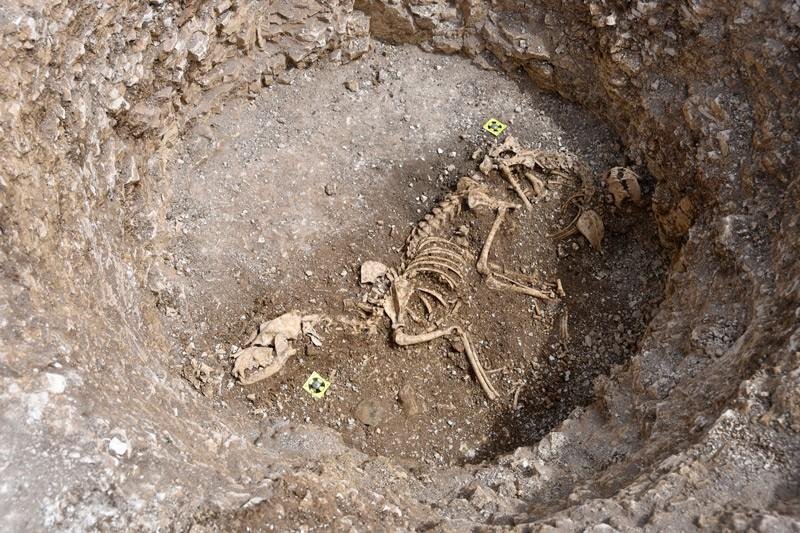
Ancient Roman Villa Emerges in Italy’s Lake Fusaro Following Geological Change

# Ancient Roman Villa Reappears from Lake Fusaro Due to Geological Activity
## An Extraordinary Archaeological Discovery
In recent times, historians and archaeologists have persistently uncovered astonishing traces of human history, highlighting how much of our past remains concealed or submerged beneath the earth. One such captivating find has recently surfaced from Lake Fusaro, located near Naples, Italy. A Roman villa, once concealed beneath the lake’s waters, has been uncovered due to swift geological changes that led to a decrease in water levels.
## The Geological Event Leading to the Discovery
Lake Fusaro is situated within the Phlegraean Fields, a vast volcanic region characterized by geothermal activity, which includes steam vents, hot springs, and volcanic structures like the Solfatara crater. This area, initially settled by Greek colonizers in the 8th century BCE, has a long-standing history of seismic activity. The Greeks referred to this place as “Campi Ardenti” or “Campi Flegrei,” meaning “Burning Fields,” attributable to its ongoing volcanic upheaval. This geological instability significantly influences the region’s constantly evolving landscape.
A fundamental force operating in this area is **Bradyseism**, a process where the ground progressively rises or sinks due to volcanic and hydrothermal processes beneath the surface. This phenomenon has been recorded in the Phlegraean Fields for centuries and has resulted in considerable changes in land elevation.
According to the [National Institute of Geophysics and Volcanology](https://www.ov.ingv.it/index.php/il-bradisismo), the terrain of the Phlegraean Fields has elevated by about **138 centimeters (4.5 feet)** since 2005, with a significant **20-centimeter (almost 8-inch) rise in 2024**. This land movement led to the seabed of Lake Fusaro ascending and the shoreline retreating, resulting in the surprising unearthing of the submerged Roman villa.
## Revealing a Roman-Era Treasure
The villa was first detected through aerial imagery, which prompted further investigation by the [Superintendence of Archaeology, Fine Arts, and Landscape of Naples](https://sabapchpe.beniculturali.it/soprintendenza/about-us/). The mayor of Bacoli, Josi Gerardo Della Ragione, confirmed the find on [Facebook](https://www.facebook.com/josigerardodellaragione/posts/1173281467500571), stating:
> “They were submerged! Walls and rooms from the Roman period have been located in Lake Fusaro. They likely belonged to an extravagant mansion.”
This conclusion is probably accurate, given the region’s rich heritage as a notable site for Roman villas, especially among the elite. The Lake Fusaro area was home to **Baiae**, a historically renowned Roman resort town celebrated for its **lavish villas, thermal baths, and splendid lifestyle**, often likened to today’s Mediterranean vacation spots. Numerous prominent Roman figures, such as Julius Caesar and Emperor Nero, were believed to have properties in Baiae.
Furthermore, Bacoli is in proximity to Pompeii and Herculaneum, ancient cities famously encased by the catastrophic eruption of Mount Vesuvius in 79 CE. This new revelation at Lake Fusaro might offer fresh insights into Roman architectural practices, engineering, and everyday life during the zenith of the Empire.
## What Lies Ahead?
Currently, information regarding the discovered villa is limited. Archaeologists plan to undertake **meticulous excavations and research** to gain a deeper understanding of the villa’s history, architecture, and potential residents. Such findings provide intriguing glimpses into the ancient past and underscore how much remains to be discovered beneath our contemporary landscapes.
This newly uncovered Roman villa from Lake Fusaro stands as a testament to the dynamic geological forces continuously molding historic sites. Alongside ongoing research in Pompeii, Herculaneum, and other submerged Roman locations, this discovery serves as a reminder that history is not static—it persists in resurfacing, awaiting exploration.
### **Additional Recent Roman Discoveries**
For those intrigued by more remarkable findings related to ancient Rome, explore these recent articles:
– [Incredibly Rare Ceramic Head Aids in Uncovering Previously Unidentifiable Roman Settlement in Britain](https://mymodernmet.com/ceramic-head-mercury/)
– [1,700-Year-Old Roman Statue Accidentally Discovered in Near-Pristine State](https://mymodernmet.com/roman-citizen-varna-bulgaria/)
– [Mysterious Hoard of 3,000 Roman Coins Found in Germany, Far from the Empire’s Boundaries](https://mymodernmet.com/roman-coin-stash-germany/)
– [Roman Road Discovered Buried Beneath an English Village Schoolyard](https://mymodernmet.com/roman-road-oxfordshire/)
As archaeologists persist in their explorations, who can say what other mysteries remain hidden beneath?